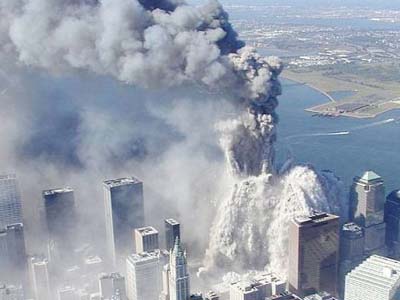
AFP, New York :
New York marks the 15th anniversary of the 9/11 attacks more resilient, wealthier and more diverse than ever, yet that terrible day is forever seared into its DNA.
The Al-Qaeda hijackings of September 11, 2001 — the first foreign attack on the US mainland in nearly two centuries-ruptured a sense of safety and plunged the West into wars still being fought today.
More than 2,750 people were killed when two passenger jets destroyed the Twin Towers, the symbol of New York’s financial wealth and confidence. The remains of only 1,640 people have been identified.
Nearly 75,000 others live with mental and physical illnesses as a result of the attacks, many of them emergency workers who breathed in cancerous toxins as they valiantly tried to save lives.
In the last 15 years, New York has sought to craft a balance between remembering the victims and the carnage, and doing what it does best: endless regenerating, rebuilding and looking toward the future.
Downtown Manhattan is today one of the most fashionable parts of New York, packed with luxury hotels, boutiques and smart restaurants.
The World Trade Center site has been totally rebuilt, home to the National September 11 Memorial and Museum, the world’s most expensive train station, a performing arts center and offices.
“People come to this site from all over the world. It is something that now is a symbol to people around the world of resilience,” said Mayor Bill de Blasio.
The jewel in its crown is World Trade Center One, or Freedom Tower, which at 1,776 feet (the year of US independence), or 541 meters, is the tallest building in the Western hemisphere, its lights visible for miles.
Its observatory affords stunning views to rival the Empire State Building and the Oculus transport hub is an architectural marvel-a $4 billion glass and steel oval designed by Santiago Calatrava.
In the 15 months since it opened, the neighboring 9/11 museum has welcomed nearly seven million visitors.
New York marks the 15th anniversary of the 9/11 attacks more resilient, wealthier and more diverse than ever, yet that terrible day is forever seared into its DNA.
The Al-Qaeda hijackings of September 11, 2001 — the first foreign attack on the US mainland in nearly two centuries-ruptured a sense of safety and plunged the West into wars still being fought today.
More than 2,750 people were killed when two passenger jets destroyed the Twin Towers, the symbol of New York’s financial wealth and confidence. The remains of only 1,640 people have been identified.
Nearly 75,000 others live with mental and physical illnesses as a result of the attacks, many of them emergency workers who breathed in cancerous toxins as they valiantly tried to save lives.
In the last 15 years, New York has sought to craft a balance between remembering the victims and the carnage, and doing what it does best: endless regenerating, rebuilding and looking toward the future.
Downtown Manhattan is today one of the most fashionable parts of New York, packed with luxury hotels, boutiques and smart restaurants.
The World Trade Center site has been totally rebuilt, home to the National September 11 Memorial and Museum, the world’s most expensive train station, a performing arts center and offices.
“People come to this site from all over the world. It is something that now is a symbol to people around the world of resilience,” said Mayor Bill de Blasio.
The jewel in its crown is World Trade Center One, or Freedom Tower, which at 1,776 feet (the year of US independence), or 541 meters, is the tallest building in the Western hemisphere, its lights visible for miles.
Its observatory affords stunning views to rival the Empire State Building and the Oculus transport hub is an architectural marvel-a $4 billion glass and steel oval designed by Santiago Calatrava.
In the 15 months since it opened, the neighboring 9/11 museum has welcomed nearly seven million visitors.

